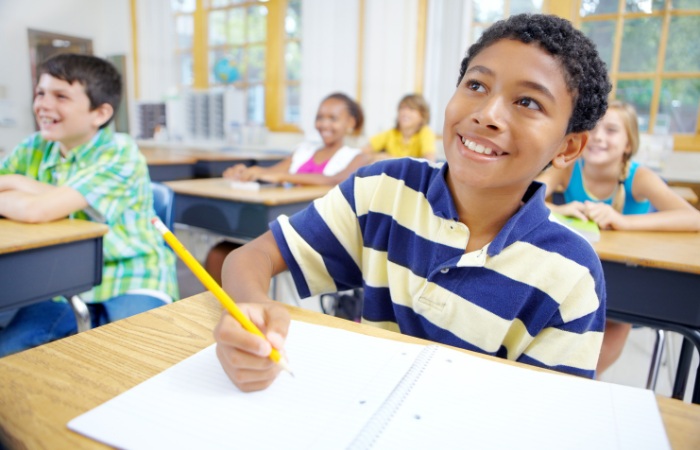Why Is It Important To Create A Safe Learning Environment?

Education is a fundamental human right and a key factor in personal and societal development. However, learning can be challenging in an environment that is not safe, supportive, and conducive to growth.
Creating a safe learning environment is essential for learners’ success at all levels. But why is it important to create a safe learning environment?
Creating a safe learning environment promotes respect and inclusion, fosters positive relationships, encourages open communication, establishes clear rules and expectations, and encourages positive behavior.
In this blog post, we will explore the importance of creating a safe learning environment and how to create a safe learning environment.
What Is A Safe Learning Environment?
A safe learning environment is a space where learners feel secure, respected, and supported to explore and develop new skills. It is a classroom, school, or academic space that prioritizes safety and creates opportunities for positive experiences.
Safe learning environments are characterized by clear and consistent classroom rules and routines, respectful language, and preventive strategies to manage conflicts and challenging behavior.
They promote trust and establish consequences for inappropriate behavior. A safe learning environment fosters community, encourages active learning, and supports learners’ development in a caring and responsive classroom.
Why Is It Important To Create A Safe Learning Environment?
A safe learning environment is crucial for learners’ success, allowing them to grow, develop, and thrive. Here, we will discuss the benefits of creating a safe learning environment.
Promoting Respect and Inclusion
Respect and inclusion are essential in a safe learning environment. Teachers and staff should promote a culture of respect where learners feel valued and accepted, regardless of their background, culture, or beliefs.
By creating an inclusive environment, learners can feel a sense of belonging, which can increase their motivation and engagement in the learning process. Inclusive practices also help learners develop skills to work collaboratively, communicate effectively, and appreciate diversity.
Fostering Positive Relationships
Positive relationships between learners, teachers, and staff are essential in creating a safe learning environment. By building relationships, learners feel supported and valued and are more likely to participate in classroom discussions and activities.
Typically, positive relationships also help learners feel comfortable sharing their thoughts and opinions, which can lead to more meaningful conversations and learning experiences.
Encouraging Open Communication
Open communication is a critical aspect of a safe learning environment. When learners feel comfortable communicating with their teachers and peers, they are more likely to express their ideas, ask questions, and seek help when needed.
This creates a space where learners can engage in meaningful discussions, share their experiences, and learn from each other.
Read Also: Why Is It Important To Take Care Of The Environment?
Establishing Clear Rules and Expectations
Establishing clear rules and expectations is essential in creating a safe learning environment. Classroom rules provide learners structure and predictability, while expectations help learners understand what is expected of them.
When learners know what is expected of them, they are likelier to follow the rules and behave appropriately. This can lead to a more positive classroom environment where everyone feels safe and respected.
Encouraging Positive Behavior
Encouraging positive behavior is crucial in creating a safe learning environment. Teachers and staff should reinforce positive behavior, such as being kind, respectful, and helpful.
This can help learners develop positive habits and build community within the classroom. When learners feel connected to their peers and teachers, they are more likely to engage in learning and develop essential social and emotional skills.
Barriers to Creating a Safe Learning Environment
A safe learning environment is essential for learners to grow academically, socially, and emotionally. However, several barriers can hinder the creation of a safe learning environment.
- Lack of Resources: Inadequate resources like textbooks, technology, and classroom supplies can affect the learning process and cause frustration, leading to disruptive behavior. Teachers and school administrators must provide adequate resources to create a conducive learning environment.
- Poor Communication: Poor communication among teachers, students, and parents can cause misunderstandings, leading to conflicts that affect the learning process. Teachers should communicate effectively with all stakeholders to ensure everyone is on the same page.
- Unclear Policies and Procedures: Unclear school policies and procedures can lead to confusion, leaving students uncertain about what is expected of them. It’s crucial to have clear and concise school policies and procedures to create a safe learning environment.
- Lack of Professional Development: Teachers need continuous professional development to learn new teaching methods, classroom management strategies, and ways to create a safe learning environment.
- Unaddressed Conflict: Unaddressed conflicts between students or teachers can create an unsafe environment affecting learning. Teachers should address conflicts promptly to maintain a peaceful learning environment.
How to Create a Safe Learning Environment?
As a teacher, creating a safe learning environment is crucial to ensuring that your students can learn and grow without fear of harm. Here are some strategies for creating a safe and supportive learning environment in your classroom.
1. Establish Clear Rules and Expectations
Establishing clear rules and expectations is essential to creating a safe learning environment. Clearly communicate your expectations for behavior and work with your students to develop a set of classroom rules. Make sure that your rules are clear, specific, and enforceable, and be sure to explain the consequences of breaking them.
2. Create a Welcoming Atmosphere
Creating a welcoming atmosphere is crucial to ensuring that your students feel safe and valued in your classroom. Greet your students each day, and take the time to get to know them as individuals. Create a warm, inviting physical space by decorating your classroom with colorful and engaging materials.
3. Promote Respectful Interactions
Promoting respectful interactions is essential to creating a safe and supportive learning environment. Teach your students to use respectful language and to treat their peers with kindness and empathy. Encourage your students to listen actively to one another and to ask questions respectfully.
4. Encourage Positive Behavior
Encouraging positive behavior is crucial to creating a safe and supportive learning environment. Acknowledge your student’s achievements and progress, and provide them opportunities to develop their skills and knowledge. Provide positive feedback and encourage your students to take risks and learn from their mistakes.
5. Manage Behavior Effectively
Managing behavior effectively is essential to creating a safe and supportive learning environment. Respond promptly and consistently to any behavior that violates your classroom rules, and follow through with any consequences you have established. Use positive reinforcement to encourage good behavior and give your students the support they need to make positive changes.
Role of Teachers in Creating a Safe Learning Environment
Teachers play a crucial role in creating a safe learning environment in the classroom. They can shape students’ experiences, behavior, and development by establishing clear classroom rules, routines, and consequences.
Basically, teachers can promote a culture of trust, respect, and inclusive language by modeling respectful language and body language cues, encouraging classroom discussions, and addressing conflicts promptly and constructively.
They can also support learners’ academic and social-emotional growth by using effective teaching methods. Ultimately, teachers can create a space where every person feels safe, valued, and capable of learning and growing.
Wrapping Up
From the discussion above, you should now have a good overview of: Why is it important to create a safe learning environment? A safe learning environment is important for the student’s physical and emotional well-being and their overall educational success.
A safe learning environment allows students to concentrate on learning, encourages them to ask questions and express their ideas, and fosters respect and collaboration. This helps students to develop the necessary skills to become successful in their future endeavors.




